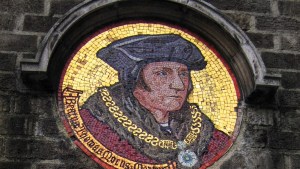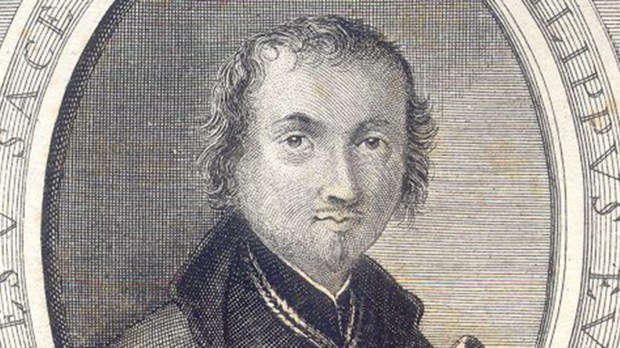A 143-year mystery has come to a close as experts believe they have identified the bones of two Catholic martyrs. The revelation comes thanks to Jan Graffius, the curator of the Stonyhurst Collections, who conducted the investigation.
Hollywell
Known as the “Hollywell Bones,” the remains of two individuals were first discovered in the attic of Hollywell in 1878. Hollywell has long been associated with the Catholic Church as a place of pilgrimage. The property contains St. Winefride’s Well, which has continuously drawn pilgrims for over 1,000 years. The site was even popular during times of strict persecution against Catholics.
The presence of these remains at Hollywell was the first indicator that they might have belonged to martyred priests. Hollywell was a home to Jesuits since before the Reformation. Even during the English persecution they remained at Hollywell, covertly ministering for more than 150 years. There are many records of martyrs’ relics coming to the Hollywell Jesuits, including those of St. Thomas of Hereford.
The bones
According to Jesuit Collections, a “wooden box containing two skulls” was discovered along with a variety of other bones. One of the skulls was punctured through the cranium, suggesting it was put on a pike. The bones, however, bore signs of trauma similar to the remains of those executed by hanging, drawing and quartering, a common sentence for Catholic priests in 17th-century England.
That the bones were preserved and hidden further suggests that these were important figures to the Catholic minority population. Catholics who obtained and hid such relics did so at considerable risk. If found out, they would have been subjected to the same sort of execution. The Jesuit Collections’ report concluded that the remains belonged to Catholic martyrs and possibly priests. They further posit that their remains were kept together because they were closely associated in life.
Sts. Philip Evans and John Lloyd
In an interview with CNA, Graffius explained that a consultation with experts on English martyrs led her to the lives of Sts. Philip Evans and John Lloyd. Evans and Lloyd became inseparable during the months before their deaths and they are still associated together today. Jesuit Collections, which keeps an extensive history of the two martyred priests, notes:
John Lloyd and Philip Evans were tried together, condemned together, shared a prison cell together, were executed together and were beatified together in 1929, in recognition of the close bonds of their mutually supportive spiritual and comradely friendship.
Once introduced to the two saints, Graffius began to see many similarities between their story and the story told by the bones. The two were executed under the same method shown in the remains and during the same time frame. That they were so close during their captivity further supports that their relics would be kept together.
According to Jesuit Collection, the theory is further supported by records that state that Evans’ head was impaled after death, while Lloyd’s was not. This would explain why only one of the skulls bears a hole on its crown. With this clinching evidence, Graffius is confident that the “Hollywell bones” are the relics of Sts. Philip Evans and John Lloyd.
“So it makes perfect logical and historical sense for these two bones of these very closely associated men to have been rescued together, and secreted together.” She added, “To be able to say with a good degree of confidence, ‘this is who they are,’ is very exciting.”

Read more:
40 English martyrs you may not know

